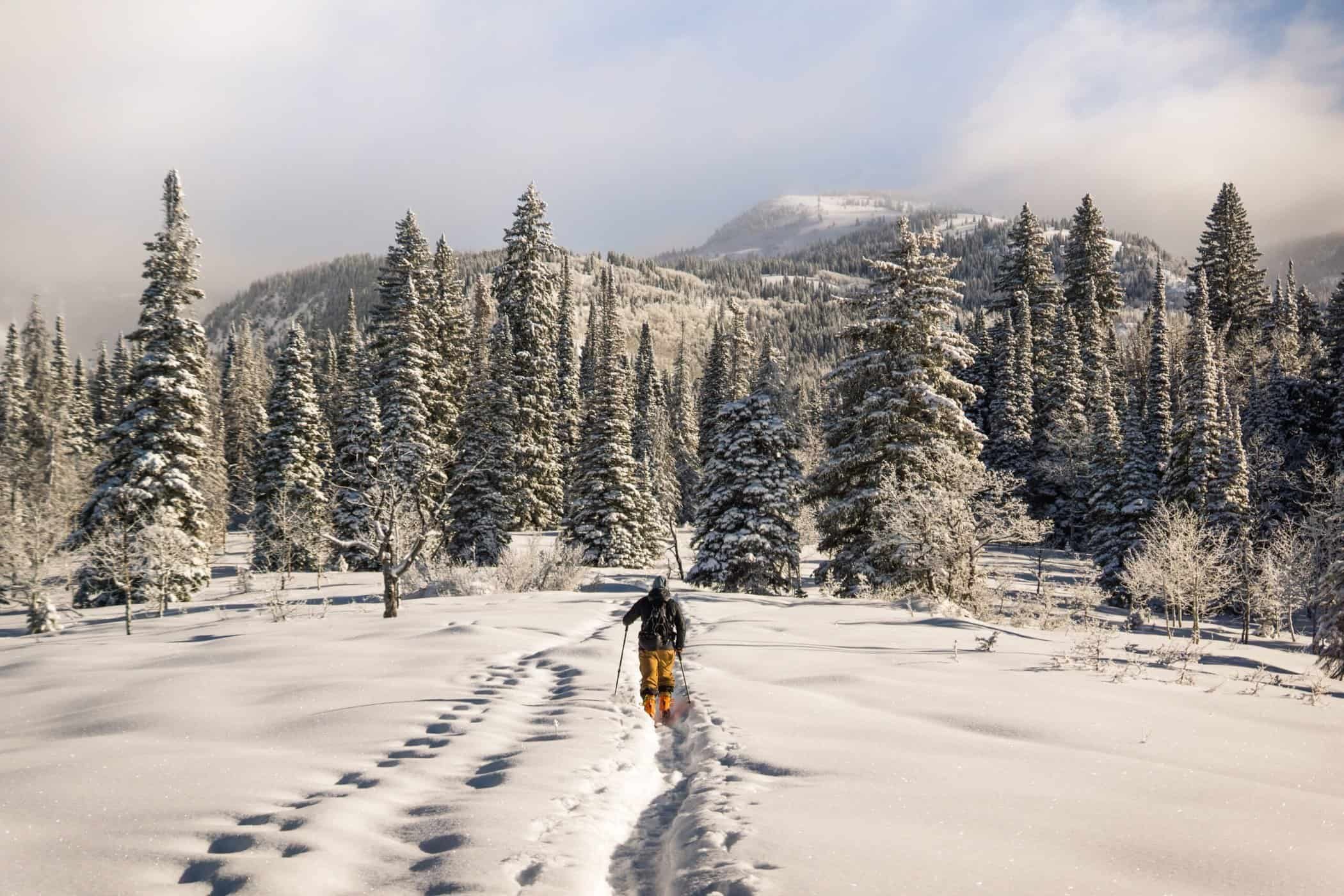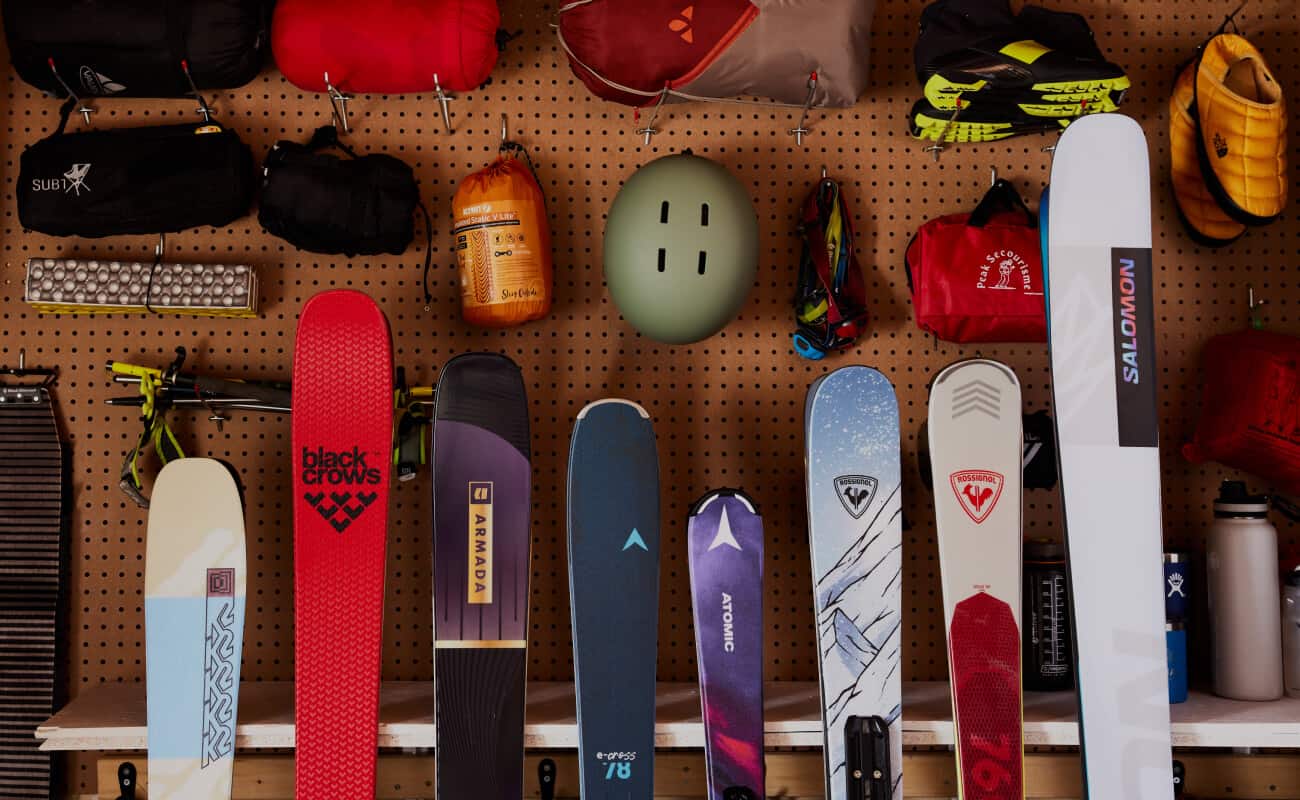What are ski bindings for and how do they work?
When we think about our ski equipment, we often forget an essential element: the bindings. Skis don’t just magically attach to your boots. It is the bindings that do the job of keeping you firmly anchored to your skis.
Bindings are made up of two sections: the toe at the front, and the heel piece at the back. They also have springs that hold your boot in place, which are also designed to allow the boot to be released in case of a fall. The elasticity and release force required to free the boot are key criteria when buying ski bindings. But there are other things to consider.
Read on to find out how to choose ski bindings based on the following features:
Choosing bindings according to your skill level
The first thing to consider when choosing ski bindings is your skiing ability. Whether you’re a novice or an experienced skier, your needs will differ on the slopes, in the snow park or on an alpine tour. Let’s explore the types of ski bindings.
Standard bindings for downhill skiing
If you’re a groomed slope enthusiast, and all your days include chairlifts, then downhill ski bindings are the way to go. Many downhill ski bindings are made of plastic. A plastic construction is appropriate for beginner skiers who are just hitting the slopes and looking to invest in affordable equipment. You may also want to consider bindings with steel or aluminum parts. These are more precise and sturdy and are better suited for skiers who ski at high speeds on the slopes, but can also be a good choice for beginners. They will last longer and will be better suited for your progression as a skier.
There are different models of downhill ski bindings, all of which are suitable for different types of resort skiing. Speed skiers will tend to choose a performance binding that allows for a more forward-leaning stance and places your boot higher, making it easier to get the edge on turns. A lower binding allows for a better feel for the snow, recommended for all-terrain skiers and freestyle skiers in the snow park. The bindings should have a high level of elasticity to absorb the impact of jumps and uneven terrain.
Tech bindings
Designed for alpine touring, these tech bindings secure the boots with a spike system and are only compatible with boots designed for alpine touring. The spikes in the front hold the boot in place when climbing while freeing the heel. On the way down, the heel of the boot is held in place by the rear spikes. This type of binding is the lightest of all, but it is also the least resistant. It is therefore only recommended for experienced skiers who want to venture out of the ski resorts and are concerned about the weight of their equipment.
Hybrid bindings
Like tech bindings, this type of binding is designed to free up your heel to allow you to ascend and explore beyond the slopes. Before descending, the binding locks in the same way as a traditional downhill ski binding. Like downhill ski bindings, and unlike tech models, they have a brake to hold your ski in the snow. Easier to use than tech bindings but also heavier, hybrid bindings are a good choice for intermediate skiers who want to learn about touring, or anyone who skis both in the resort and in the backcountry. Be careful not to choose this type of binding if you ski exclusively in the resort: the quality of the release in case of a fall is less reliable than with standard bindings. All in all, this type of binding is a good compromise for skiers who want to ski everywhere.
Bindings that fit your level and your skis
When buying ski bindings, it is important to choose a model that is suited for your weight and skill level. The most important thing to check before making your choice is the release threshold of the binding, which is the amount of force that must be applied for the binding to release your boot. The binding used to attach your boots to your skis is also used to free you from them in case of a fall. This is what will prevent many knee injuries.
Several adjustments are necessary to properly adjust your ski bindings. To learn how to install and adjust your ski bindings, see our article on the subject. Let’s review the two most important ones:
DIN setting
What is the DIN setting? It refers to the release threshold of your binding. Its value, based on weight and skill level, is unique to each skier. It is the amount of force required for your boot to release from the binding when you fall. The higher the DIN setting, the greater the force required for the binding to release the boot. Not all bindings have the same hardness scale, so it is important to know your DIN setting before purchasing a ski binding.
The model name of most fasteners includes a number that refers to the maximum release value of the fastener. Thus, you will want to choose a fastener whose adjustment scale includes your DIN measurement. It is recommended that you do not use the maximum values of your fasteners and always leave two or three notches below and above your DIN setting so that you can adjust your fastener setting. Following this logic, if your tightening is rated at 10, don’t choose fasteners that have a setting scale of 6 to 10. Instead, you should choose a binding with a 6-14 range, so that you have the flexibility to change the setting if your weight changes or if your skiing level improves. There are a number of online calculators to help you determine the appropriate DIN setting for your weight and skill level.
The width of the brake
Now that you know the best setup for your body type and ski level, you need to look at choosing the right bindings for your type of skis. In order to get the most performance out of your gear, you will of course want to choose a binding that is designed for the same type of skiing as the skis you have chosen. A performance binding will be more appropriate for on-piste skis just as an alpine touring binding will be more appropriate for downhill touring skis.
With this in mind, the only criterion that will determine if your bindings are compatible with your skis is the width of the brake. Downhill ski bindings all have a brake that grips the snow to prevent your skis from sliding all the way down the hill when you fall. To measure the width of the brake to choose, you need to know the size of your skis at the skate, that is, the measurement under the foot. The width of the brake must be greater than the width of your skis, otherwise you will not be able to install your bindings. Most binding models allow you to change the width of the brake quite easily.

FAQ
Q: How do I determine the size of my ski bindings?
A: The choice of ski bindings is based on your weight and your level of skiing. Your bindings can then be adjusted based on the dimensions of your boot. The measurements required to adjust your ski bindings to your boots are usually engraved on the sole of the boots. To determine the width of the brake of the bindings to choose, you must know the size of your skis under the foot. This measurement is the smallest of the three numbers on your skis.
Q: How to determine the width of the ski binding brake?
A: To determine the width of the brake on your ski bindings, take the width of your skis at the base (i.e. under the foot) and add an inch or two. The width of the brake must always be greater than the width of your skis, otherwise you will not be able to install your bindings. The skis' skate size is written on the ski. It corresponds to the smallest number of the three.
Q: How to install and adjust ski bindings?
A: Installing and adjusting bindings on skis involves several steps and requires knowledge and the right tools. To find out how to install and adjust your ski bindings, read our article on the subject. Before you start drilling and adjusting your skis and bindings, make sure you know the dimensions of your boot. If in doubt, it is always best to consult a specialized technician.
Q: How to choose the right skis?
A: Choosing the right skis depends on many factors such as your skill level, the type of terrain you want to ski on, your height and weight. Before you invest a good amount of money in your new ski equipment, make sure you know all about the different types of skis and the features you need to consider to know how to choose the right ones.
Q: How to choose the right ski boots?
A: Choosing your ski boots is based on several factors, such as the stiffness of the boot, the length and width of your feet, and the compatibility with your ski bindings. Learn how to properly measure your feet and determine the stiffness rating that matches your level by reading our article on how to choose the right ski boots.

Bindings are a very important part of your ski equipment. While they may not be the most exciting piece of equipment to buy (let’s face it!), they will play a major role in how well you control your skis, and consequently, how much fun you have on the slopes. Whether you’re a novice or an advanced skier, make sure you choose a model that will meet your needs and that will be able to support you as you progress.
Still have questions? Don’t hesitate to contact our customer service agents, who can help you buy the right ski bindings that meet your needs. Have a great seaso











